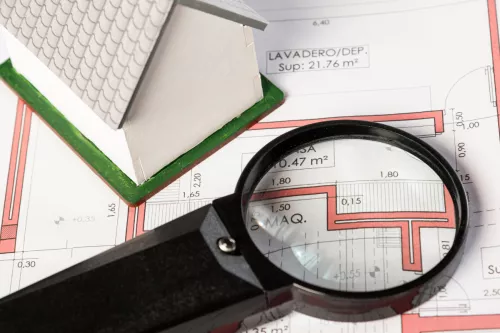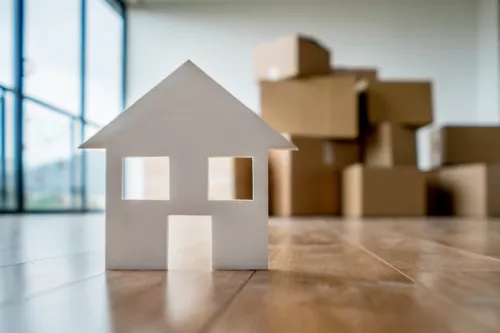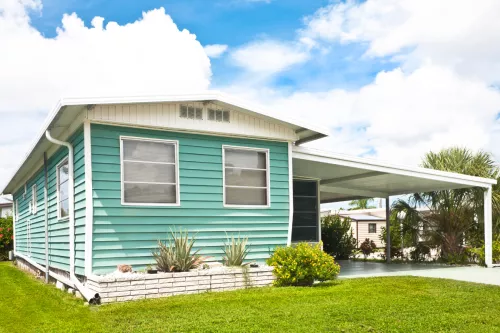Moving to a new home is synonymous with stress for some. There's so many things to think about, from bureaucratic processes, getting in contact with moving companies, and packing up your belongings to setting up your new space.
Whether you're moving across town or across the country, a well-organized checklist will help make the entire process as smooth as possible. We’ve created a list with “indispensable things to do when moving” that is guaranteed to serve as a useful tool during your move.
First things First - Planning Ahead
Research Moving Companies
Let’s start by thinking about the quantity of things (furniture, boxes, suitcase) that will go with you on this move and start to research moving companies that will best suit your belongings and budget. If you are moving out of the state you will need a company licensed with a U.S. Department of Transportation (USDOT) number.
Create a Moving Binder
Keep track of all your moving documents, receipts, and checklists in one place. We know that things get messy during a moving process and losing documents or having to look for them when most needed is a headache worth avoiding.
Transfer Utilities
Schedule the disconnection of utilities in your current home and the setup of the same in your new home. This is one of the very important bureaucratic steps you’ll have to take. You have to make sure everything is done and paid for, and that your new home will be ready to go once you get there.
What You Will Bring / What You Will Give Away
Go room by room and decide what to keep, donate, or throw away. During the moving process there are so many things we realize we don’t even use anymore. It’s a good time to select things thinking about your new space and what will fit there.
Change Your Address
Submit a change of address form to the postal service and update your address with banks, etc. You will have to go to your local post office and fill out a change-of-address form, or do it online at usps.gov. It might be a good idea to ask a neighbor to check your mailbox for 1 to 2 weeks after you’ve left.
Notify Important Parties
Alert your employer, schools, and subscription services of your move. If you are moving far and have students at your house, you will need to notify the school and get a transfer for a new school.
Gather Packing Supplies
Get boxes, tape, bubble wrap, scissors, stylus and other necessary supplies. You don’t want to miss anything you need when packing your belongings. Make sure you have enough boxes and bubbles to protect fragile things and at least one pair of scissors to cut the tape and boxes when necessary.
Measure Furniture and Spaces
Ensure large items will fit through doorways and in the new space. This will make it easy for you and for those helping you. Once you have an idea of the size of your furniture, you can better decide “what goes where” and, in this way, have a more efficient move.
Plan for Kids, Pets and Plants
If suitable, leave the kids and the pets with a sitter. Arrange for the transportation and care of the plants. When you move, everything will be happening at the same time and any help is welcome.
Packing-up

Packing Phase (Systematic Packing)
Start with items you don’t often use. Try to keep the items together according to the rooms they came from. Wrap fragile items securely and consider personal transport for high-value items. We found boxes to be the best way to pack items as they are easy to carry, easy to mark what is inside them, and easy to organize accordingly.
Try to keep a box with some essentials that you'll need immediately upon arrival to the new home. As moving day approaches, pack your daily necessities.
Photograph Electronics and Dispose of Hazardous Materials
Take pictures of cable setups to remember how to reconnect components later and safely discard or give away items that can't be moved, like paint and chemicals.
Confirm with Movers
Verify the time of arrival and other details with the moving company. Make sure to have the parking permits and to tell your neighbors the day you will be moving, in case you share the driveway.
Prepare Appliances and the Old Home
Clean and disconnect appliances that are moving with you. Clear the fridge and freezer. It might be a good idea, when getting close to two weeks before moving, to consider the amount of perishables and the frozen food storage. Consume what you have before taking another trip to the supermarket!
Finally, do a final walk-through, clean as necessary, and make sure everything is packed.
Moving Day
Stay in Contact with the Moving Company
Call the company to ensure that everything is going according to established plans and arrangements. Make sure you have transportation to your new home.
Mover Instructions
Make sure to give clear directions and supervise loading if needed. Doing so will give you an opportunity to make sure things are done according to plan, as well as to keep an eye on things (how your belongings are handled, for example).
Final Check
Ensure nothing is left behind, all lights are off, and all doors and windows are secured. The last step is to say goodbye to the old and hello to the new!
Settling In
Unpack Essentials and Check Utilities
Unpack your essentials box and start setting up beds, baths, and part of the kitchen. As you go through the house, check utilities and make sure they are working correctly.
Document Condition
Once your items are delivered, check for them for any damages and, if there are any, document them for claims. This part might take a little time, since a thorough survey will prevent surprises later.
Explore the Neighborhood
Locate the nearest grocery store, pharmacy, hospital, and other essentials. It might be a good idea just to get out of the house for a moment and take a moment to breathe.
To get fully organized and get things done the way you want in the house might take some time. Find a pace that is comfortable for you and try to see this moment as an opportunity to create intimacy and identity in your new space.
People Also Ask
When should I start preparing for my move?
Ideally, begin preparing one to two months before your moving date to ensure everything is organized and you're not rushed.
How do I choose a reputable moving company?
Look for companies with positive reviews, proper insurance, and a transparent pricing structure. Ask for recommendations and check if they have US credentials.
What should I personally transport during a move?
Valuables such as jewelry, personal documents, and heirlooms should be kept with you, along with a box of essentials for the first night.
How can I ensure my deposit is returned when moving out of a rental?
Document the condition of the rental when you leave, complete any required cleaning or repairs, and provide your new address to the landlord for the return of the deposit.
How do I change my address with the postal service?
You can change your address online at the official postal service website or in person at your local post office.
Is it better to move during a particular time of the week or month?
Mid-week and mid-month moves can sometimes be cheaper and movers usually have more availability since weekends and month-ends are typically busier.

 Marcio Vasconcelos
Marcio Vasconcelos





